Unlocking the secrets of successful gardening is every green thumb’s desire, and one approach that has stood the test of time is companion planting. This age-old gardening technique harnesses the power of nature’s synergy to create thriving and harmonious plant communities. But what exactly is companion planting, and what makes it so beneficial for your garden?
Companion planting is a gardening approach that promotes plant health, wards off pests, lures pollinators, enhances soil richness, and even amplifies flavor by thoughtfully choosing and situating plants close together, fostering reciprocal advantages.
Curious? Dive into the world of companion planting with our comprehensive guide, delving into the numerous benefits and practical advice for adopting this eco-friendly and sustainable horticulture technique in your very own green space.
Quick Navigation
- What is Companion Planting?
- Top 6 Benefits of Companion Planting
- Tips for Successful Companion Planting
- Popular Companion Plant Pairings
- Additional Companion Planting Strategies
- Mistakes to Avoid in Companion Planting
- Conclusion
What is Companion Planting?
Companion planting is an ancient gardening technique that involves growing different plants near each other in order to provide mutual benefits.
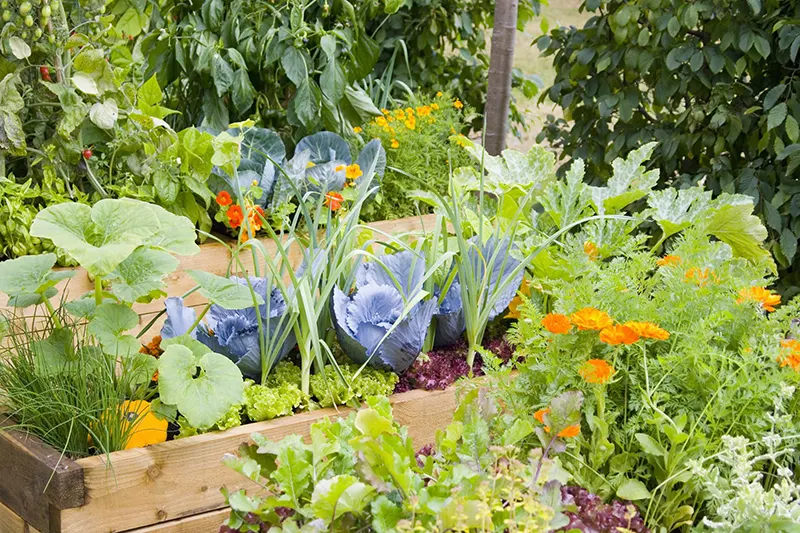
By strategically placing certain plants together, gardeners can maximize the potential of their garden while minimizing the need for chemical interventions. This holistic approach to gardening promotes overall plant health and sustainability.
Top 6 Benefits of Companion Planting
1. Natural pest control
When gardeners combine plants that repel insects and pests and those that are vulnerable, they can effectively reduce the damage brought by these parasitic insects.
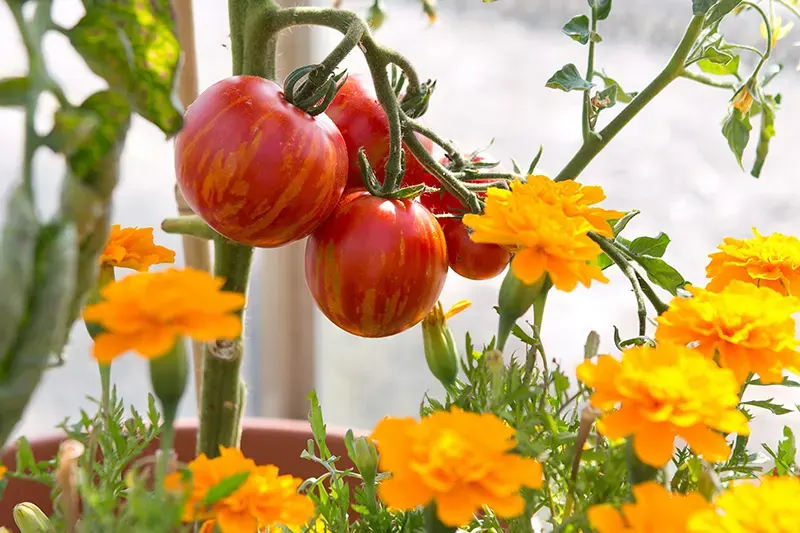
Marigolds, for example, put off nematodes, while bail deter mosquitoes. Putting these plants together creates a form of pest control without having to use chemicals and pesticides, thus, creating a healthier natural ecosystem.
2. Improved pollination
Planting together herbs and flowers that attract pollinators (like butterflies and bees) helps boost pollination rates and increase crop yields.
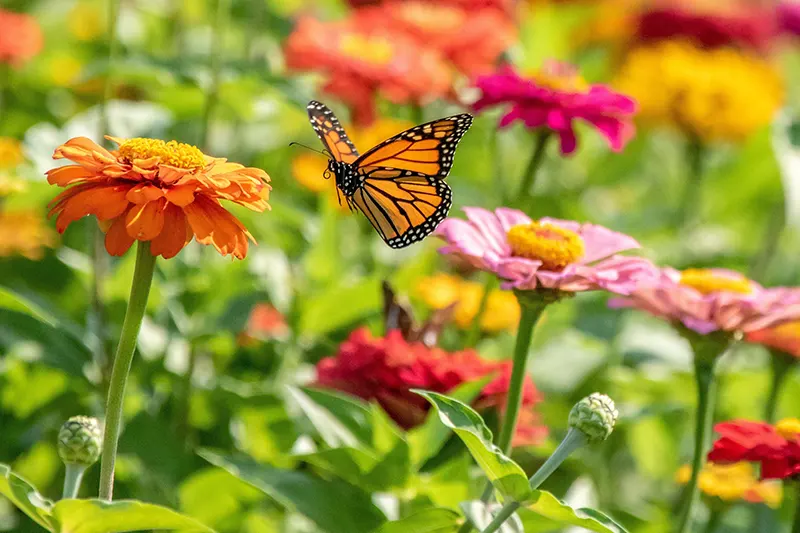
Gardeners who practice this method help foster a diverse environment that encourages pollinators, thereby supporting local ecosystems and improving the productivity of their lands and gardens.
3. Improved soil health and fertility
Other plants, like legumes, can fix nitrogen in the soil and make it more fertile for their companion plants.
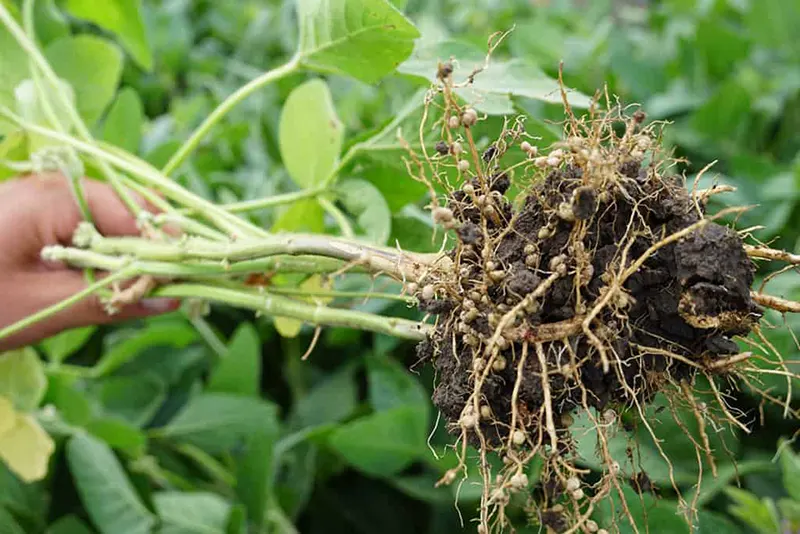
On top of that, deep-rooted plants also break up compacted soils, which allows nutrients to circulate more freely. A healthy social foundation is a crucial component to create a thriving garden.
4. Physical support and protection
If you put tall plants (like sunflowers or sweet corn) beside lower-growing plants (like peas or beans), they can provide support and shade.
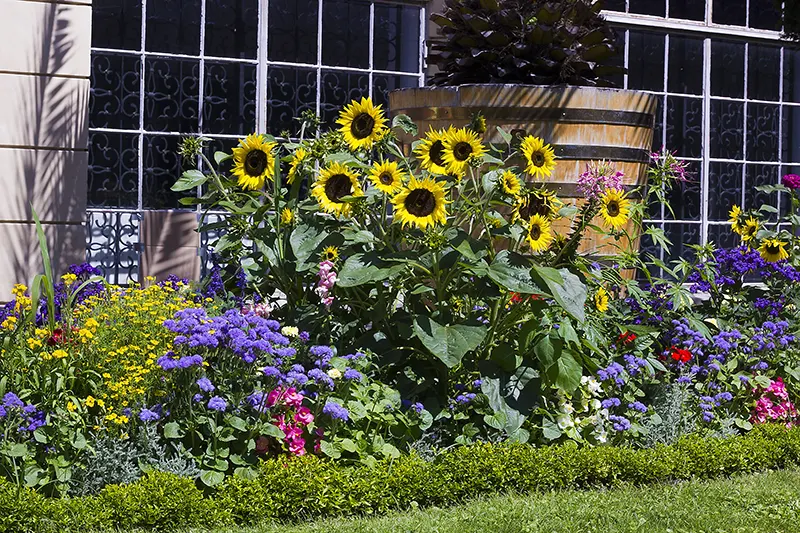
This favorable relationship allows tall plants to safeguard smaller and more delicate plants against jarring weather conditions while also creating a visually appealing garden arrangement.
5. Enhanced flavor and crop quality
Some plant matchings help improve both the quality and flavor of their companions. Planting basil next to tomatoes, for example, is believed to improve the taste of both crops.
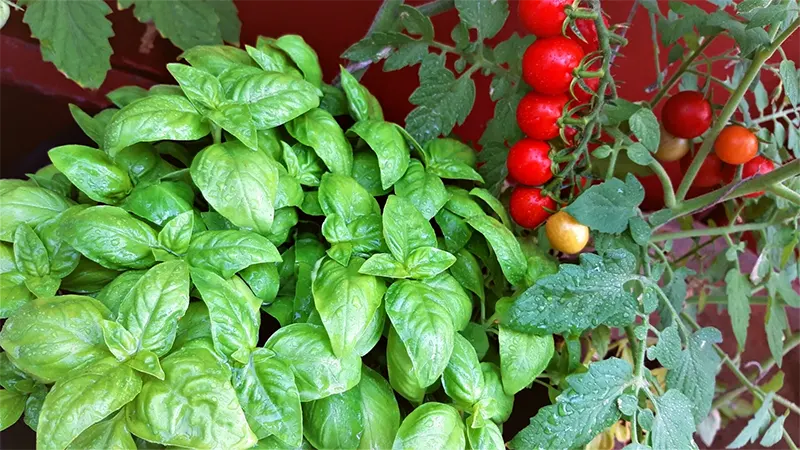
When gardeners understand the synergies created from these relationships, they can leverage that and create a more satisfying and flavorful harvest.
6. Better utilization of space
Companion planting practices often involve pairing plants with different growth habits, which can help gardeners make the most of limited space.
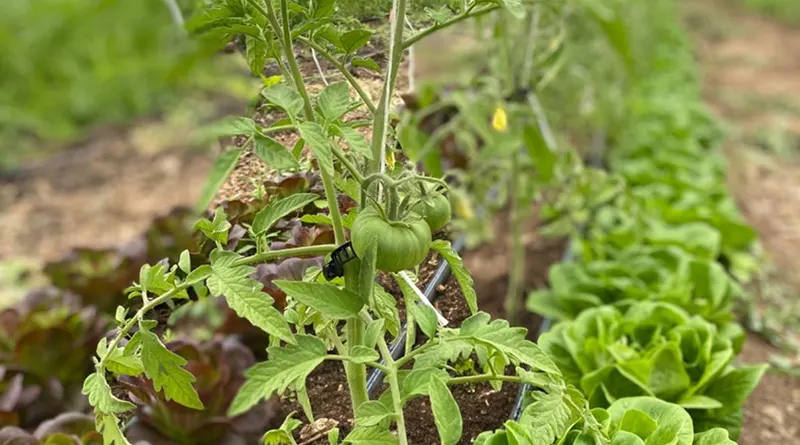
For instance, planting quick-growing crops like lettuce or radishes near slower-growing crops, such as tomatoes, can maximize garden productivity without overcrowding.
Tips for Successful Companion Planting
Researching plant combinations for specific needs
Before you get started with companion planting, it’s best to take time to research plant pairings that will work best with the garden that you have.
Remember, every garden is unique. You can also consult with reputable gardening experts or resources to accurately find combinations that will work for your garden’s specific needs.
Experimenting with different combinations
Don’t be afraid to experiment with several plant partners in your home garden. Mixing and matching is the key to discovering the best pairs for your unique growing conditions.
Monitor both your failures and success and use these to improve your companion planting strategy over time.
Observing and adapting to local conditions
Environmental factors like soil fertility and the type and local climate play a crucial role in determining the success of your companion planting.
Closely observe how your plants interact with your home garden and immediately make adjustments whenever needed.
Incorporating diversity
A diverse garden is more resilient to pests and diseases. Include a variety of certain plants with different colors, shapes, and growth habits to create a vibrant and healthy garden ecosystem.
By incorporating diversity, you not only create a visually appealing garden but also support a range and attract beneficial insects and pollinators.
Rotating crops
Crop rotation is an essential practice for maintaining soil health and preventing the buildup of pests and diseases. Rotate your crops each season to help replenish soil nutrients and reduce the risk of pest infestations.
Popular Companion Plant Pairings
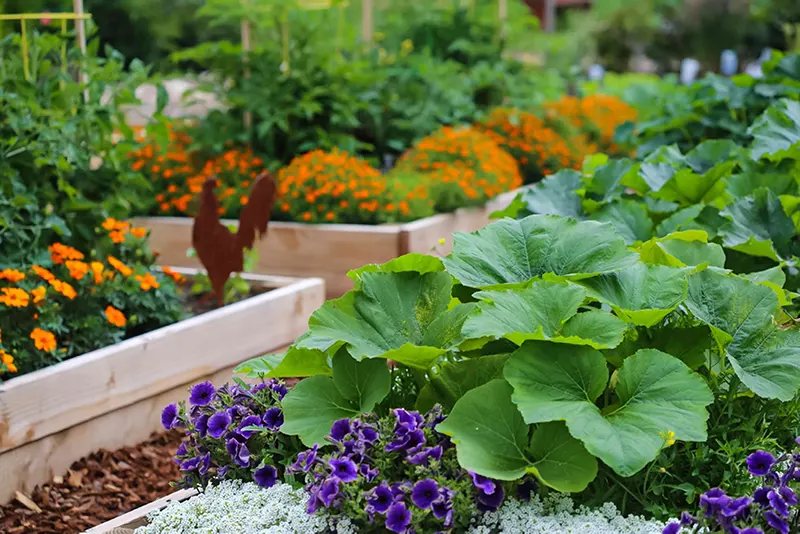
1. Tomatoes and basil: As mentioned earlier, planting basil near tomato plants can improve the flavor of both crops. Additionally, basil can help repel pests like whiteflies, which can damage tomato plants.
2. Corn, beans, and squash: This classic combination, known as the “Three Sisters,” has been used by Native American communities for centuries.
Corn is a good companion plant because it provides support for pole beans, which in turn fix nitrogen in the soil for the benefit of the corn and squash. Squash plants provide ground cover, helping to prevent weeds and conserve moisture.
3. Carrots and onions: Planting carrots alongside onions help repel pests, as the strong scent of onions masks the aroma of carrot foliage, which can attract carrot flies.
4. Cabbage and aromatic herbs: Aromatic herbs, such as dill, mint, or thyme, can help deter pests like cabbage moths from laying eggs on cabbage plants.
5. Sunflowers and cucumbers: Sunflowers provide shade and support for cucumber vines, while cucumbers help keep the ground around sunflowers moist and weed-free.
Additional Companion Planting Strategies
Exploiting timing and growth rates
One of the keys to successful companion planting is understanding the growth habits and timing of the plants you’re working with.
If you plant quick-growing crops like radishes or lettuce in between slower-growing plants, such as tomatoes or peppers, it can help you make the most of your garden space.
The fast-growing plants will be ready to harvest before the slower-growing plants need space, maximizing your garden’s productivity.
Using flowers and ornamentals in the vegetable garden
Don’t hesitate to mix flowers and ornamentals with your vegetable plants. Many flowering plants and edible flowers can attract beneficial insects, repel garden pests, or provide other benefits to the vegetable crops in your garden.
For example, marigolds are known to repel nematodes and other pests, while nasturtiums can help deter aphids.
Creating habitats for beneficial insects
Incorporating plants that provide food and shelter for beneficial insects can help you maintain a healthy garden ecosystem.
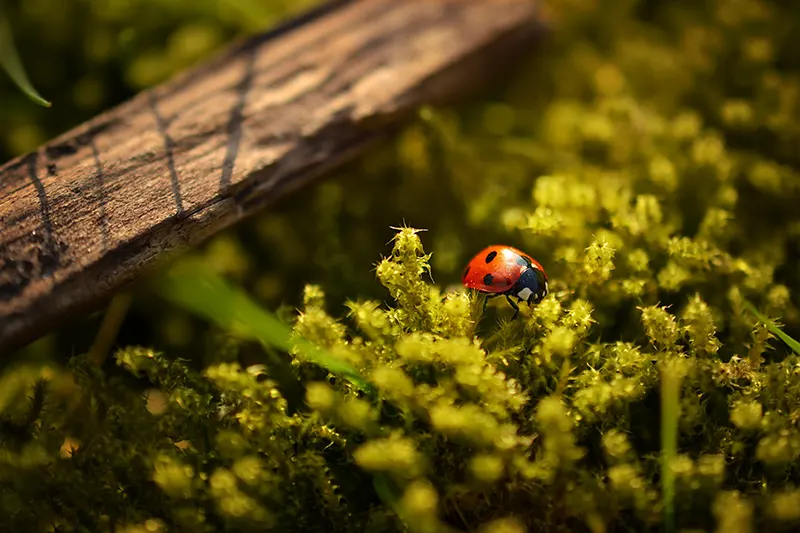
For example, planting a variety of flowers with different bloom times can ensure that beneficial insects, like ladybugs and lacewings, have a constant food source throughout the growing season.
Additionally, providing a habitat for predatory insects, such as ground beetles, can help keep pest populations in check.
Planting trap crops
Trap cropping is a companion planting strategy that involves planting a sacrificial crop to lure pests away from your main crop.
For example, planting mustard or radishes near your cabbage can help draw flea beetles away, protecting your cabbage plants from damage.
Be sure to monitor and manage the trap crop as needed to prevent pests from spreading back to your main crop.
Using living mulches
Some plants can act as living mulch, providing ground cover that helps conserve moisture, suppress weeds, and regulate soil temperature.
Examples of living mulches include clover, which can also fix nitrogen in the soil, and vetch, which can help improve soil structure.
Practicing intercropping
Intercropping is a companion planting technique that involves growing two or more crops together in the same space.
This can help maximize the use of garden space, as well as provide various benefits like improved soil health, reduced pest pressure, and increased crop yields.
For example, intercropping legumes with cereal crops can help improve soil fertility, as the legumes fix nitrogen in the soil.
Mistakes to Avoid in Companion Planting
Planting allelopathic plants together
Some plants produce chemicals that inhibit the growth of other plants. These allelopathic plants should not be planted near certain plants, as they can negatively impact their growth and development.
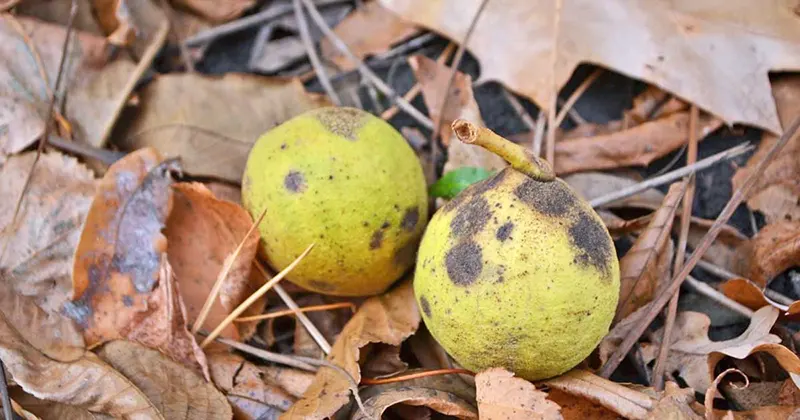
For example, planting sunflowers near potatoes can stunt the growth of the potato plants due to the allelopathic compounds produced by sunflowers
Ignoring plant spacing and sunlight requirements
While companion planting can provide many benefits, it’s essential to consider each plant’s spacing and sunlight requirements.
Crowding plants together can lead to competition for resources and increased susceptibility to pests and diseases.
Be sure to follow the recommended spacing guidelines for each plant and ensure they receive the appropriate amount of sunlight for optimal growth.
Overlooking potential plant incompatibilities
Not all plants are compatible with one another, and some combinations may have adverse effects on your garden. Research potential plant pairings thoroughly before planting them together.
For example, planting tomatoes near potatoes can increase the risk of disease, as both plants are members of the nightshade family and are susceptible to similar pathogens.
Neglecting proper garden maintenance
Whether you are doing companion planting or container gardening, proper garden maintenance is still crucial.
Ensure your plants receive adequate water, nutrients, and care throughout the growing season. Regularly weed, prune, and monitor your plants for pests and diseases to maintain a healthy and productive garden.
Conclusion
Companion planting is a versatile and effective gardening practice that can lead to healthier plants, increased yields, and a more sustainable garden ecosystem.
By understanding the unique relationships between plants, experimenting with different combinations, and adapting to local conditions, you can discover the best companion plants and harness the power of companion planting to create a thriving, diverse, and beautiful garden.
So, take the plunge into the world of companion planting and discover firsthand the benefits and joys it can bring to your garden.
